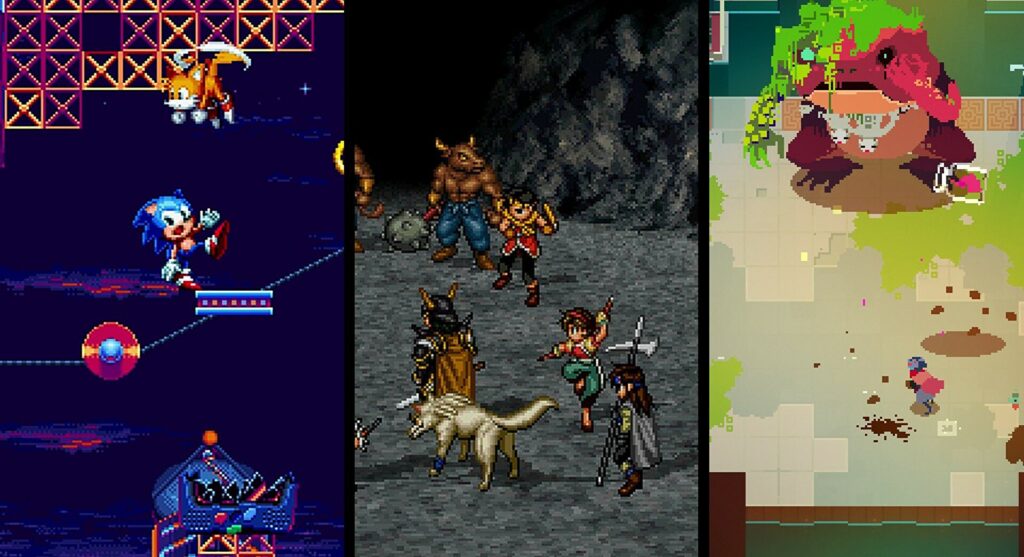Game design relies heavily on the art of graphics, particularly 2D and 3D graphics that contribute to the overall visual appeal of a game. Creating 2D graphics involves designing detailed images that appear flat on the screen, while 3D graphics allow for more immersive and interactive gameplay. Both types of graphics rely on the manipulation of shapes, colors, and textures to add depth and realism. Video game designers often use a combination of 2D and 3D graphics in their projects, and as technology continues to advance, the future of game design will likely focus on creating more immersive experiences with more detailed and realistic graphics.
The Power of Pixels: The Art of 2D and 3D Graphics in Gaming
Introduction
Gaming is an industry that thrives on visual appeal. The art of game design, particularly in the realm of graphics, has come a long way over the years. The attention to detail and the intricacies of a game’s visual appeal make a significant impact on the overall experience of the player – from the smallest details in 2D graphics to the immersive 3D graphics, game design today is a significant contributor to the gaming experience. This article will examine how games are made, focusing on the creative art of 2D and 3D graphics in the game development process.
2D Graphics in Game Design
2D graphics have always been a staple in video game design. From the time of Pong to the present day, 2D graphics have played an essential role in constructing successful games. The process of creating 2D graphics involves designing 2-dimensional images that appear flat on the screen, but with an attention to detail that can make or break the game’s overall look and feel.
Traditionally, 2D graphics were created by artists using pencils, paper, and later, digital drawing tablets. Now, game designers have access to a range of software and tools that enable them to create detailed visuals with less effort.
A popular software used for 2D graphic design is Adobe Photoshop. Photoshop can be used to design detailed backgrounds, characters, and interfaces that appear as 2D images within the game. Other software options used for 2D graphic design include Inkscape, Piskel, and GIMP.
The Elements of 2D Graphic Design
Successful 2D game design depends heavily on the manipulation of shapes, colors, and textures. The designers use layers to build up the final image, adding detail piece by piece. Elements such as shading, outlining, and highlighting are used to add depth to 2D graphics, giving them a three-dimensional appearance, even if flat on the screen.
3D Graphics in Game Design
While 2D graphics have been a staple in video game design for decades, 3D graphics have taken over the past decade with vast improvements in technology and software development. Three-dimensional graphics allow for more immersive gameplay and enable a more comprehensive range of movement.
The process of creating 3D graphics starts with creating a 3D model, or wireframe, on the computer. The model serves as a skeletal form for the object or character you’re designing.
Once the wireframe is created, the designers add texture maps to create the color and other detail, such as roughness, to the surface of the design. The final step is to add lighting and reflective effects and animations to bring the characters and objects to life.
Elements of 3D Graphic Design
3D graphic design, like 2D design, relies heavily on shape, color, and texture. However, 3D graphics offer a more realistic and interactive experience due to the addition of lighting, shading, reflective effects, and other elements that bring the designs to life.
The Integration of 2D and 3D Graphics
While 2D graphics remain a crucial aspect of video game design, 3D graphics have created an immersive experience for the players. Video game designers often use a combination of 2D and 3D graphics in their projects.
For instance, 2D graphics are used to create the background and static interfaces, while 3D graphics are used for characters and objects, allowing for more interactive gameplay. Combining the two types of graphics can create a unique, visually striking game that appeals to all types of players.
The Future of Game Design
As technology continues to advance, so will the art of video game design. The integration of augmented and virtual reality is likely to be an essential aspect of the future of gaming. The future of gaming will likely focus on creating immersive experiences, which means incorporating more detailed and realistic graphics to foster seamless player interaction.
Conclusion:
The art of video game design encompasses 2D and 3D graphics, with each type contributing to the final product’s success. The use of technology and software has enabled designers to create visually appealing and interactive games. As technology continues to advance, the future of video game design will likely focus on creating more immersive experiences, which means incorporating more detailed and realistic graphics to foster seamless player interaction.
